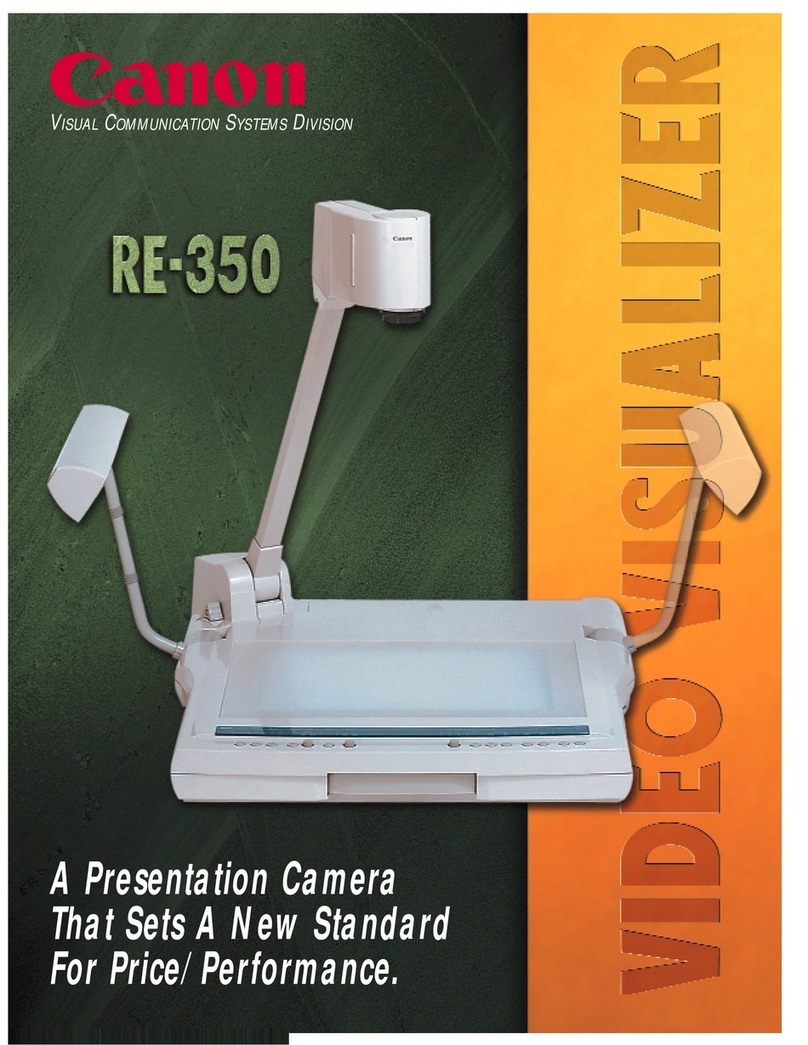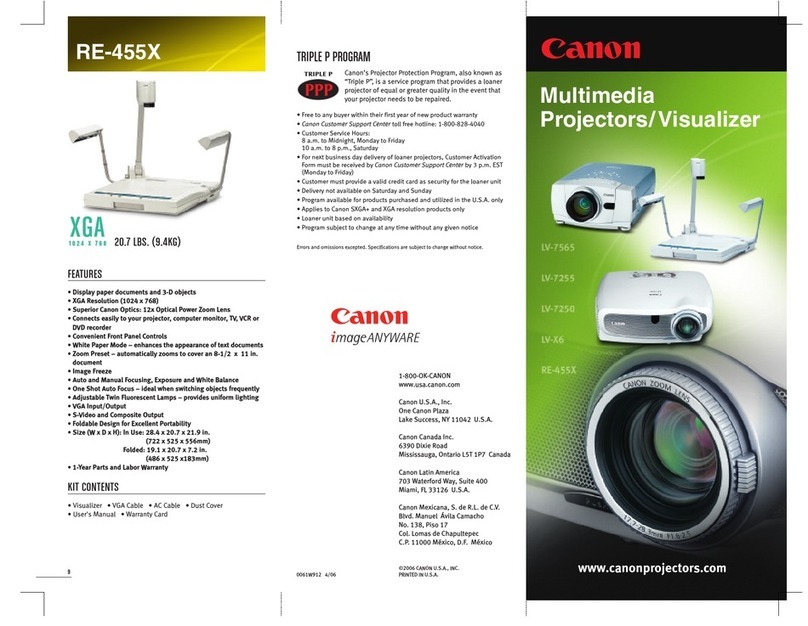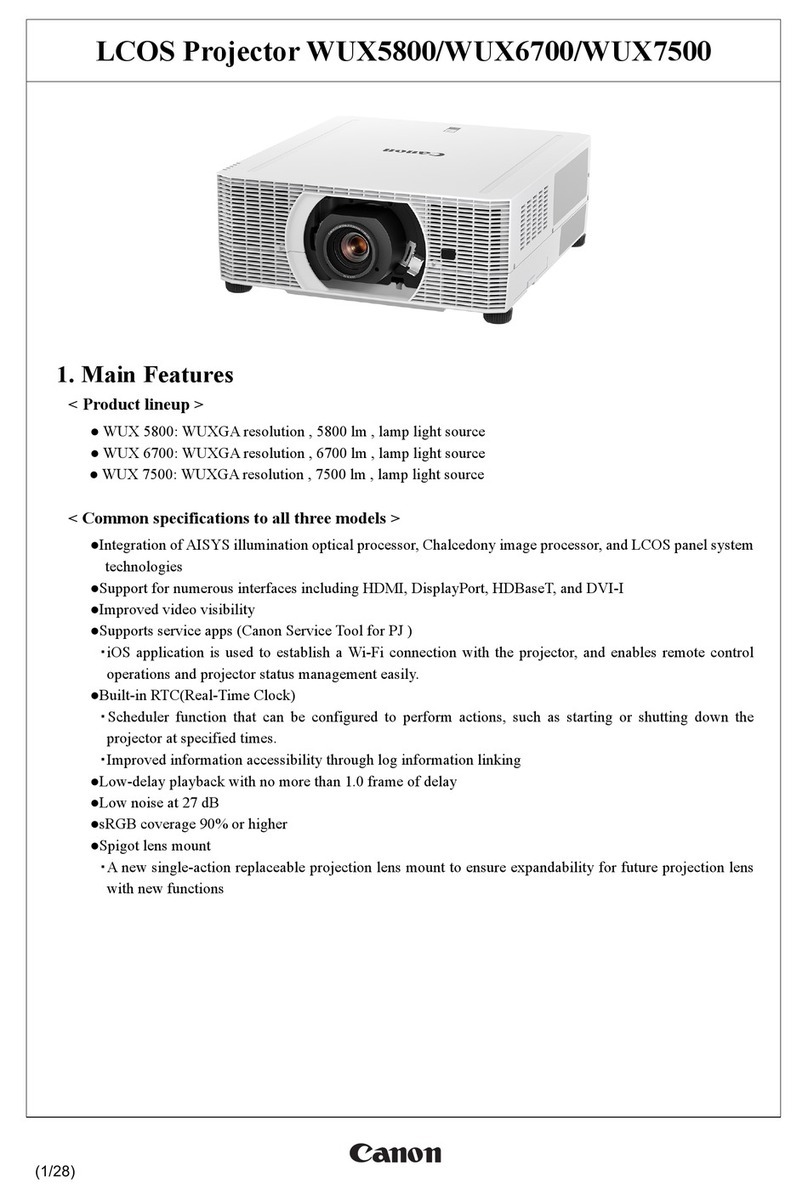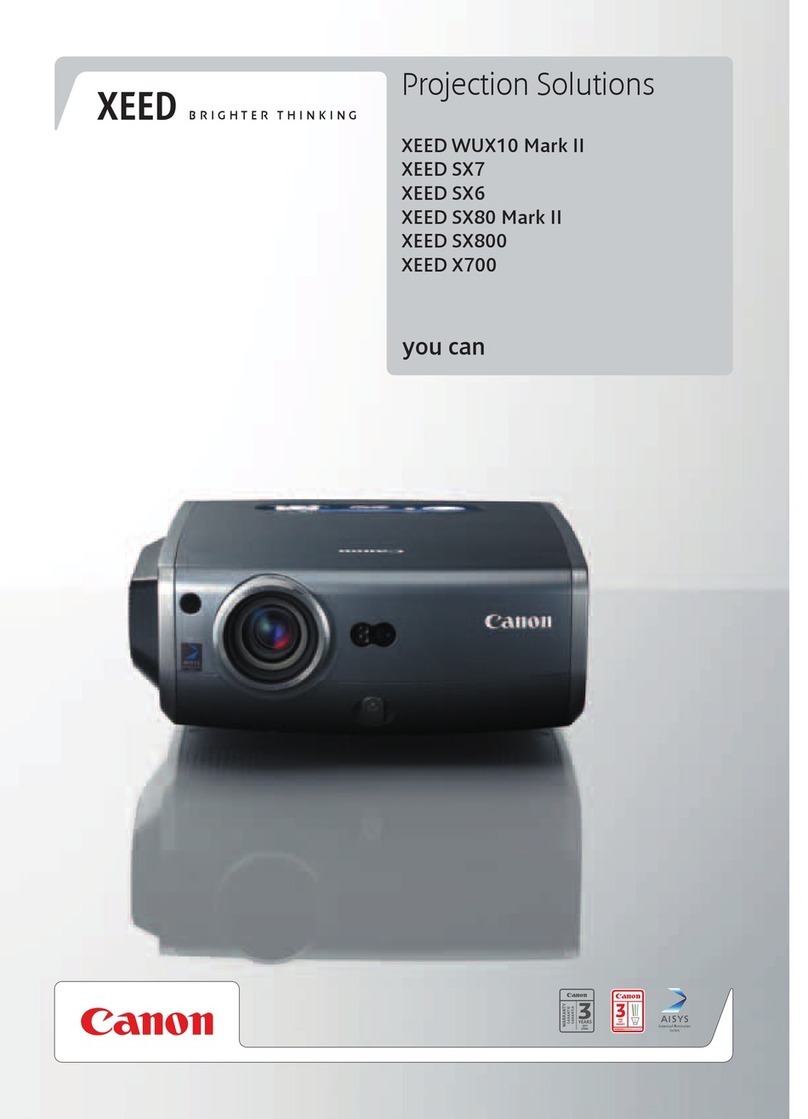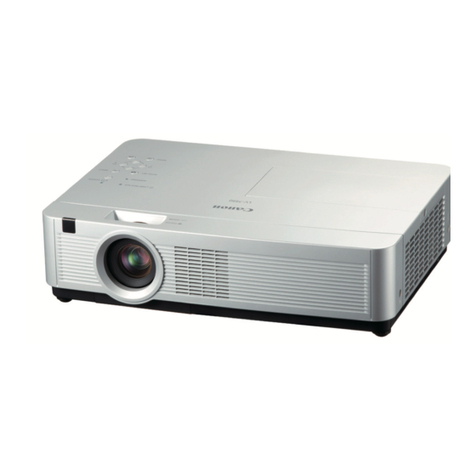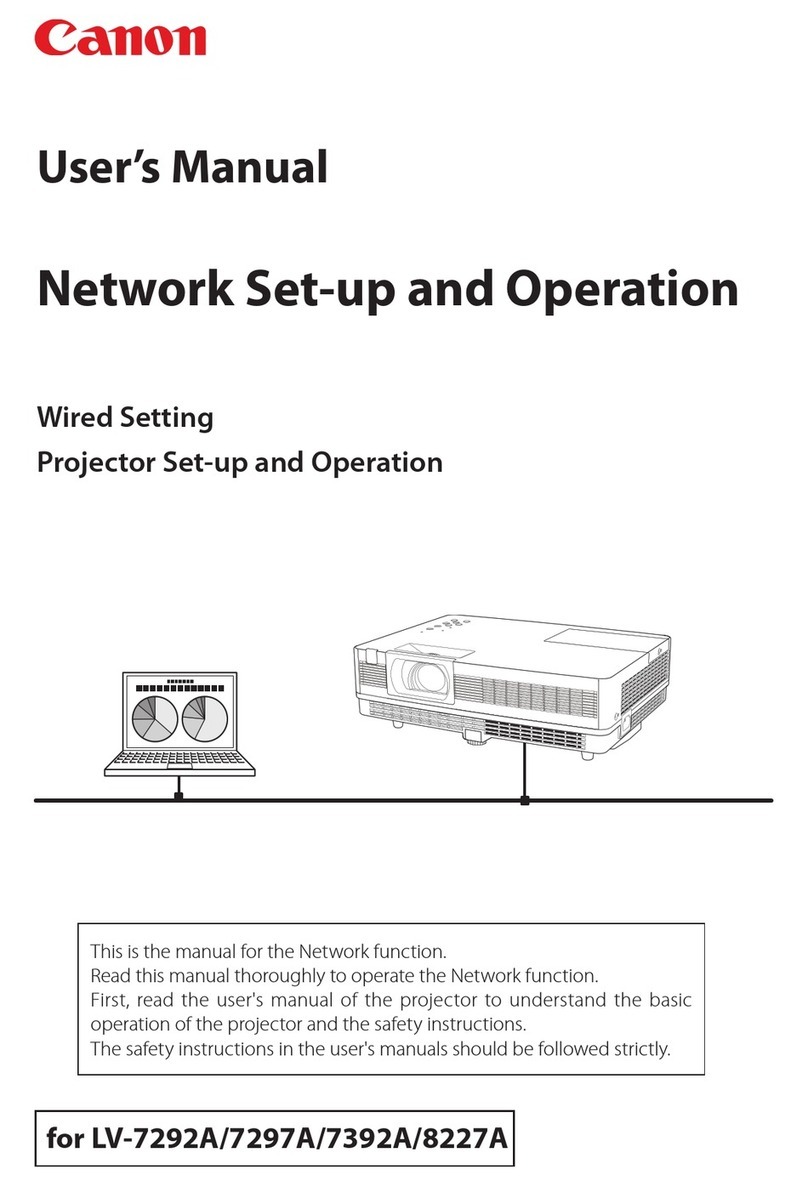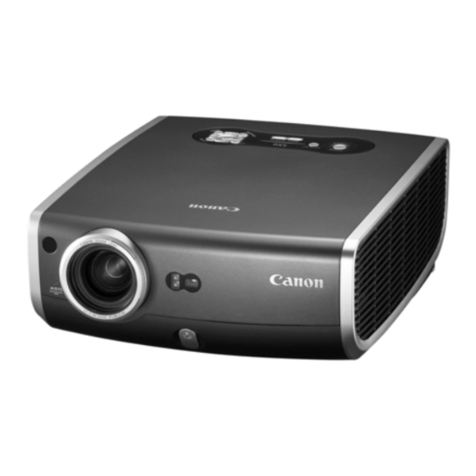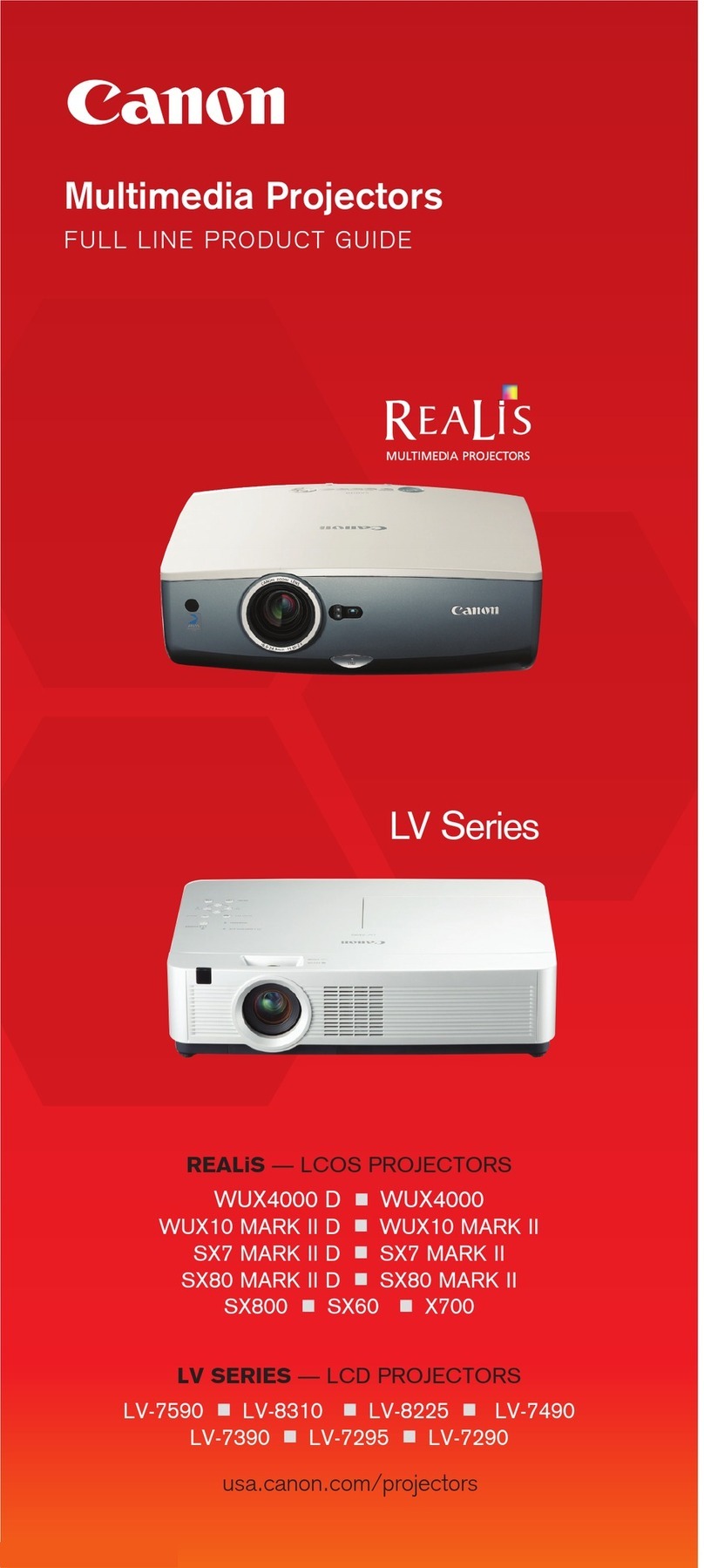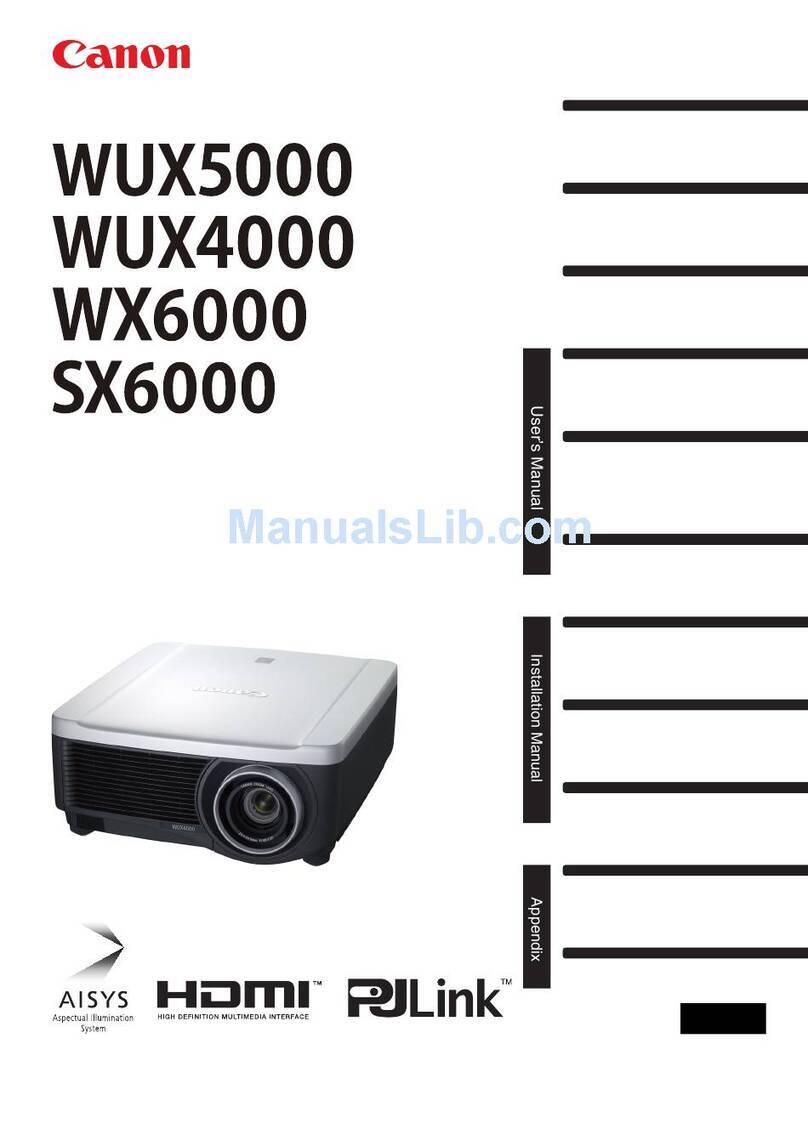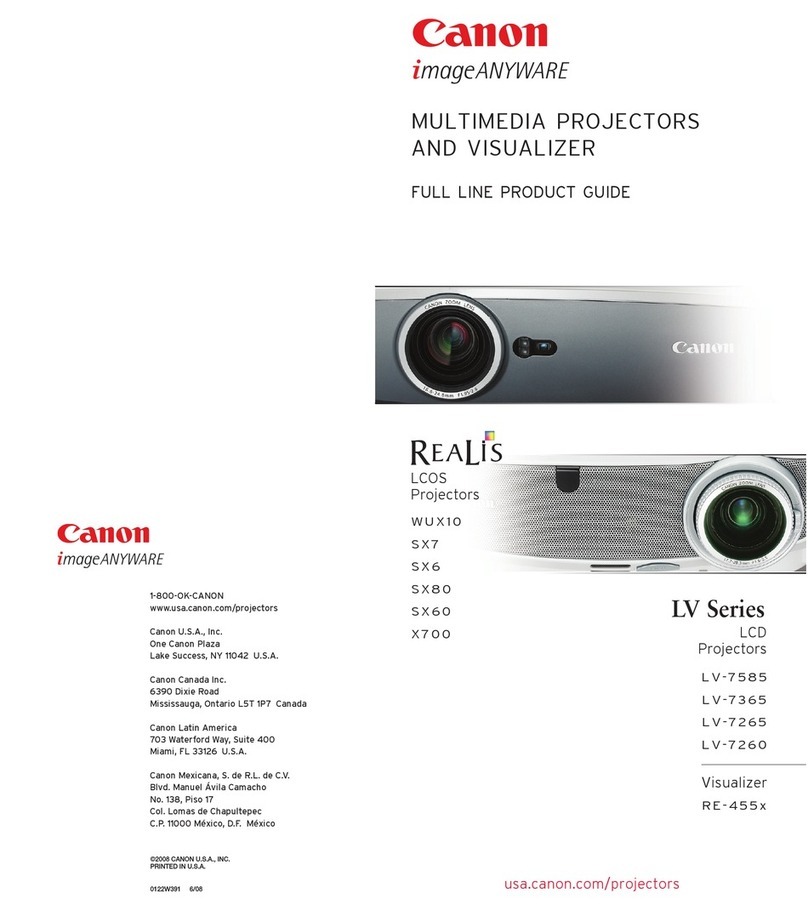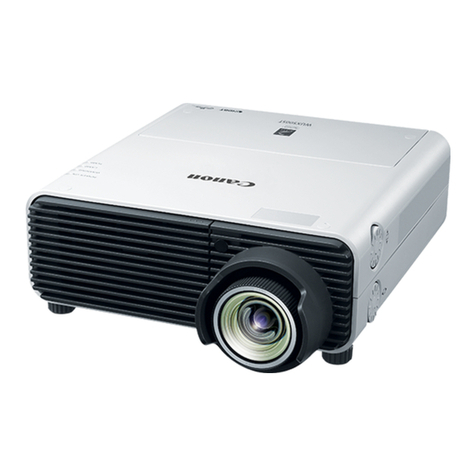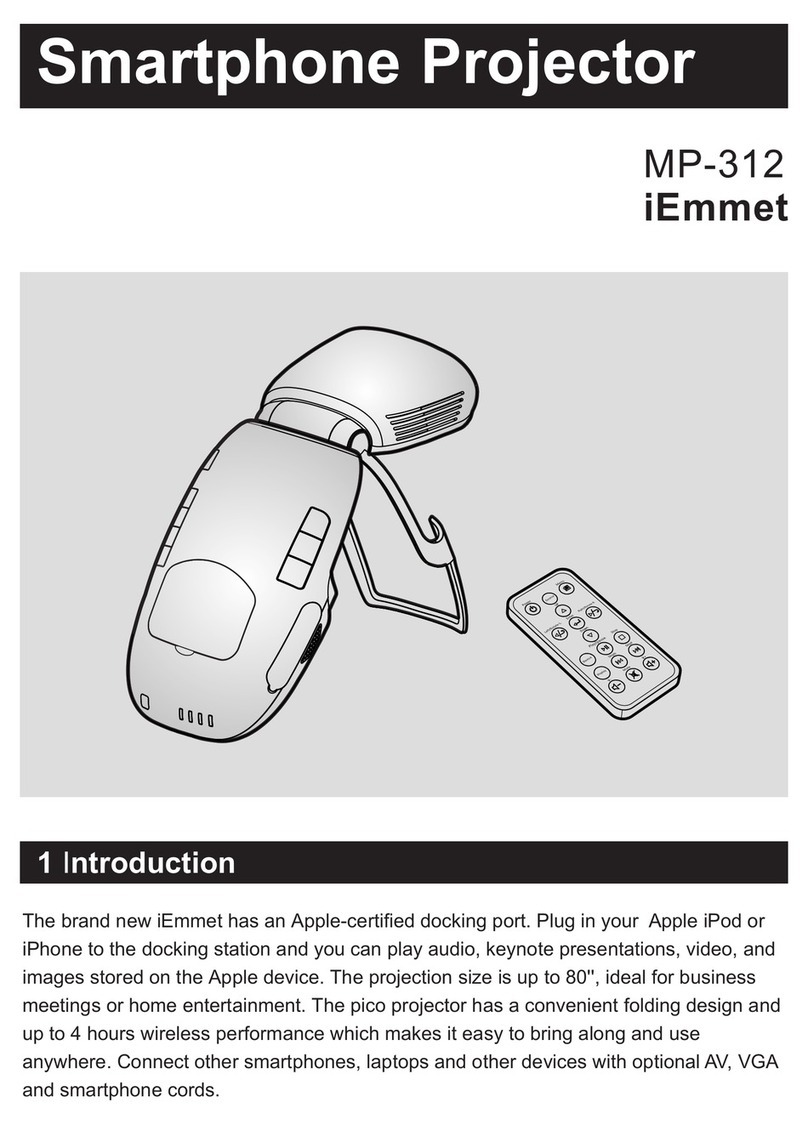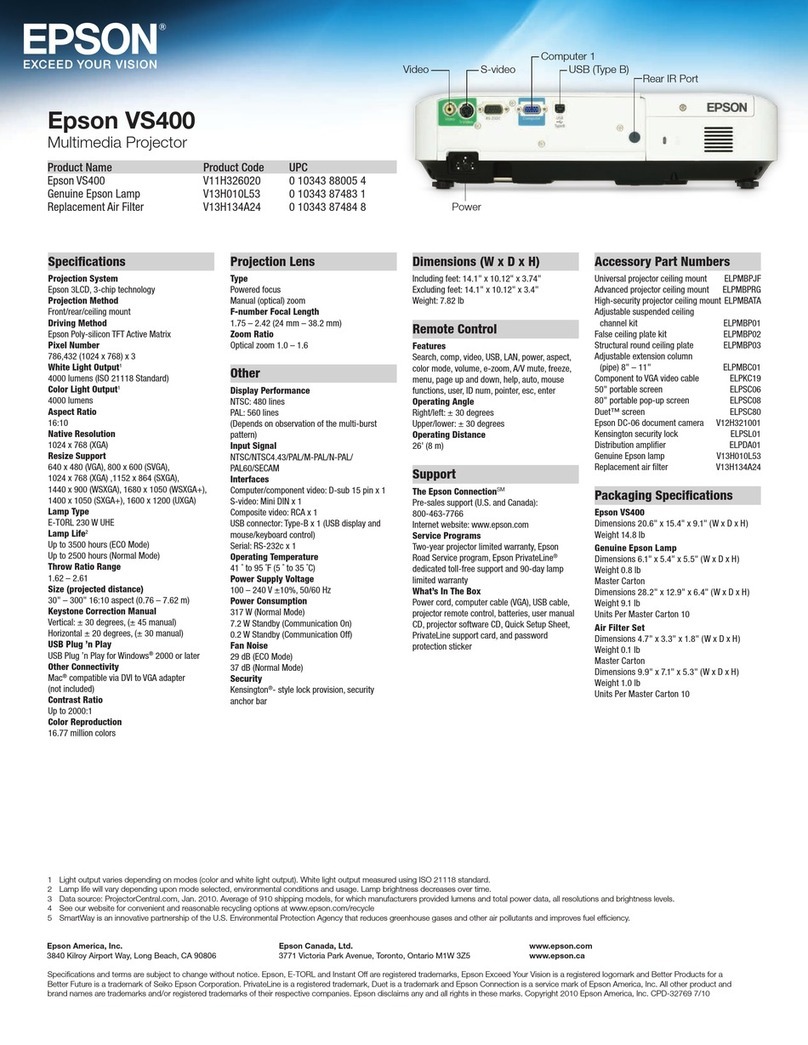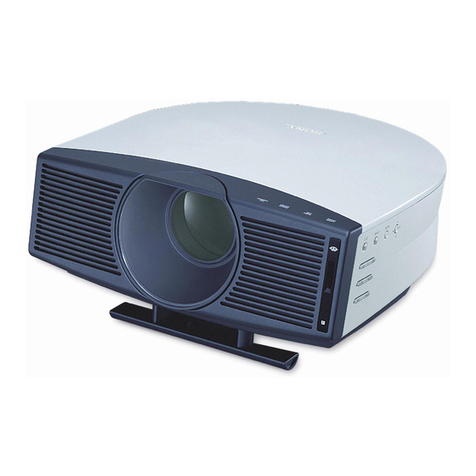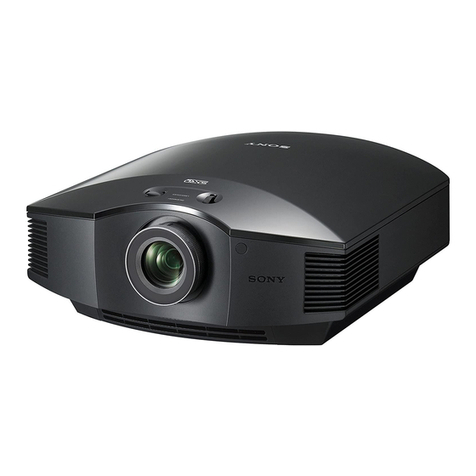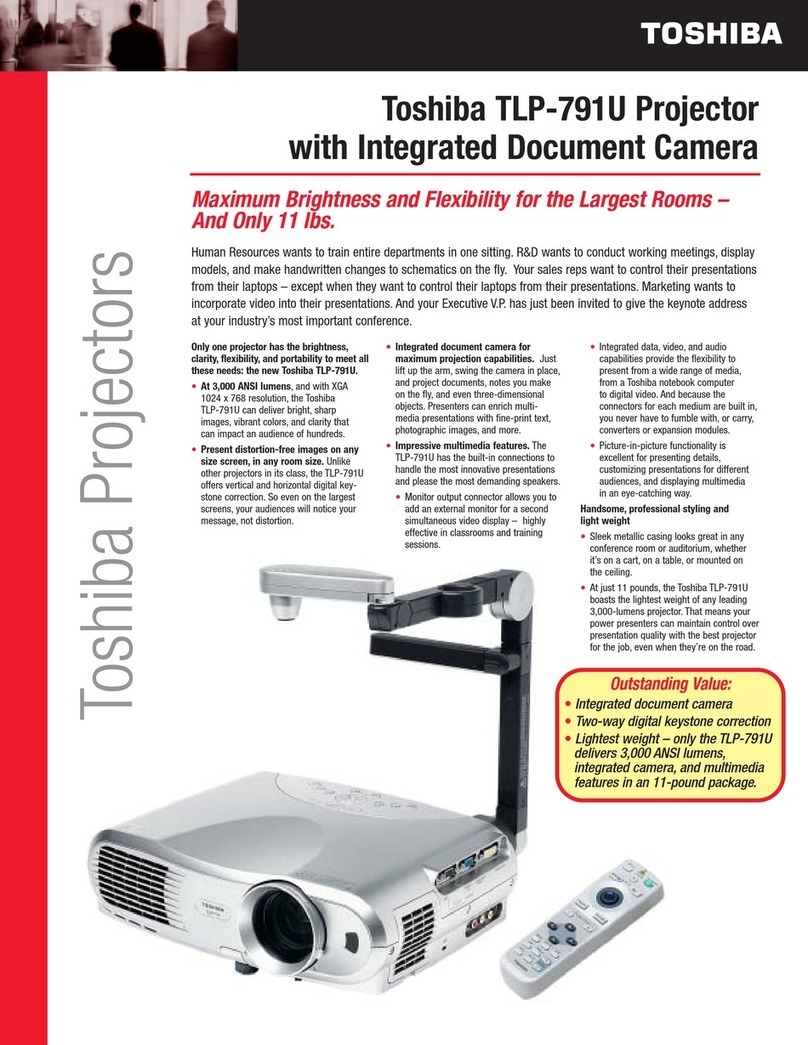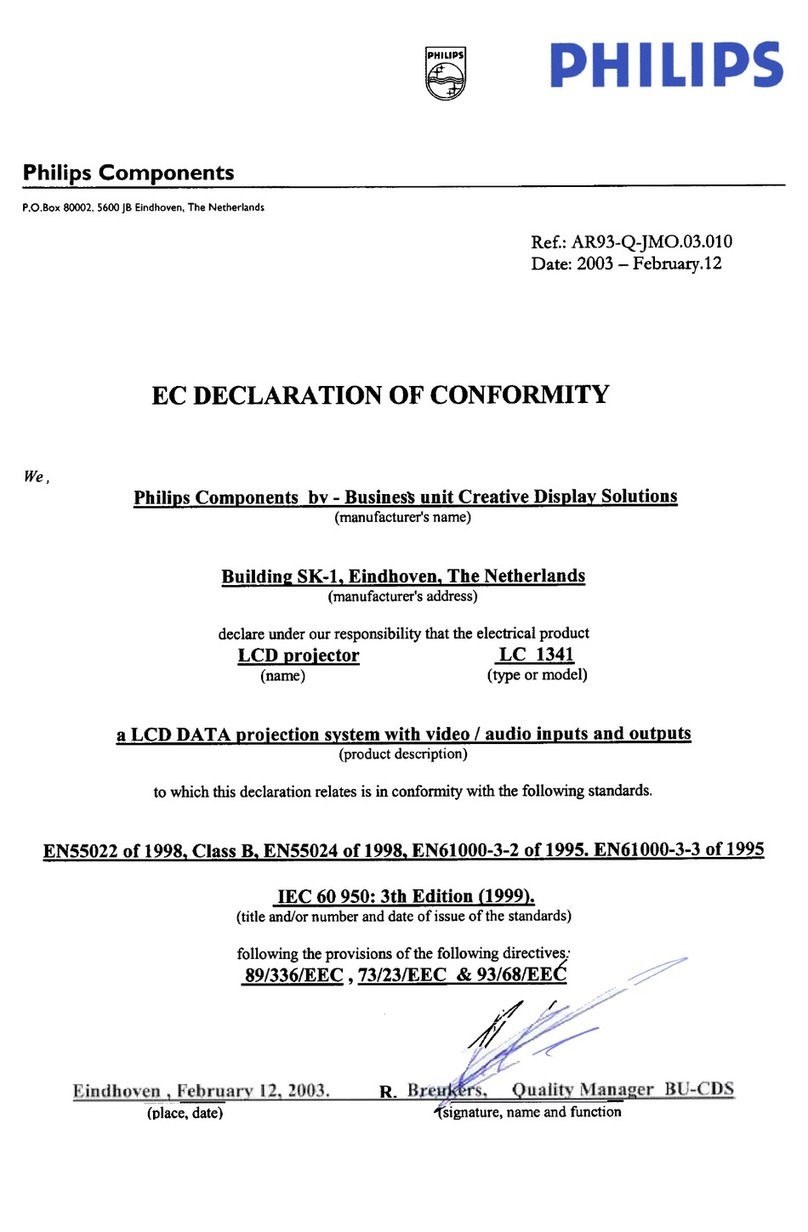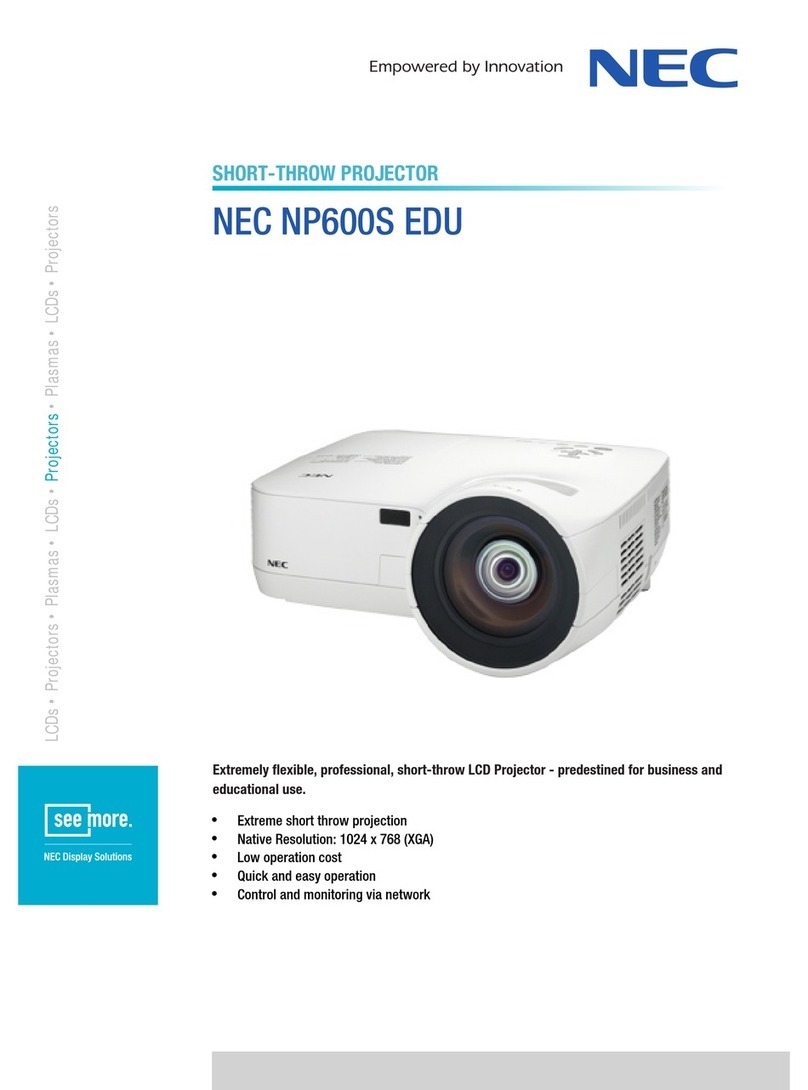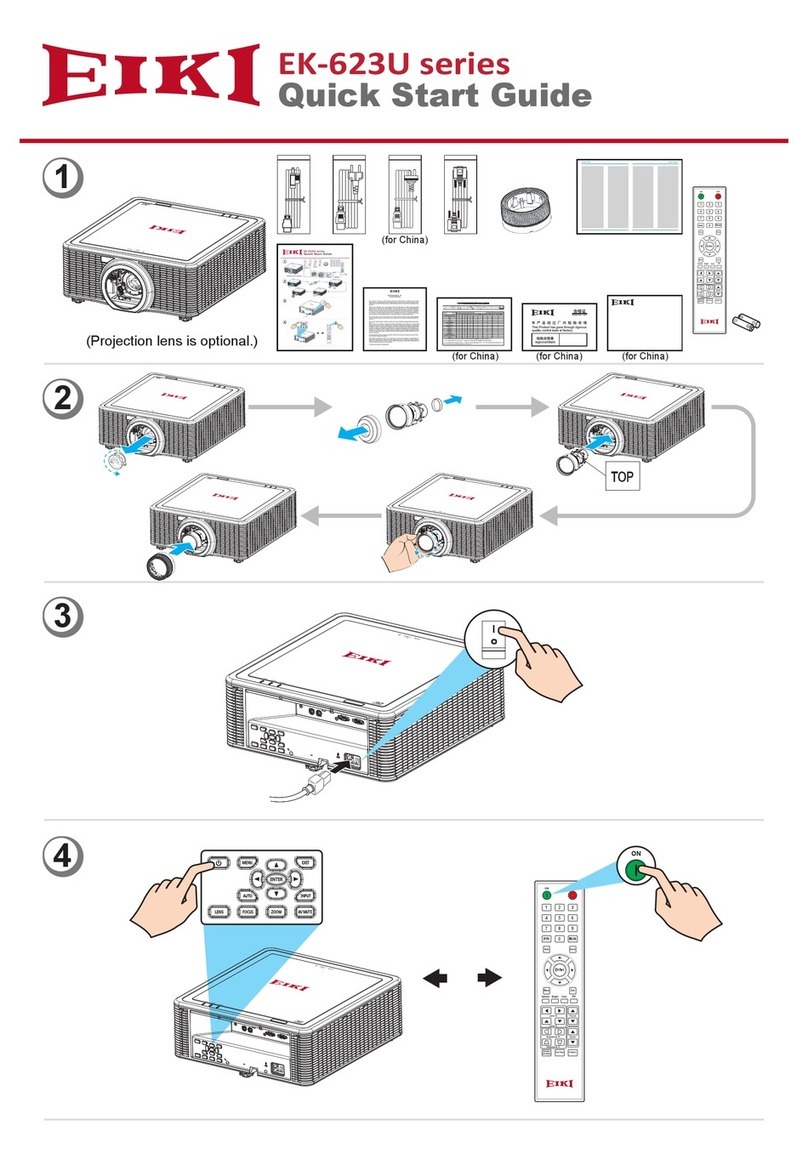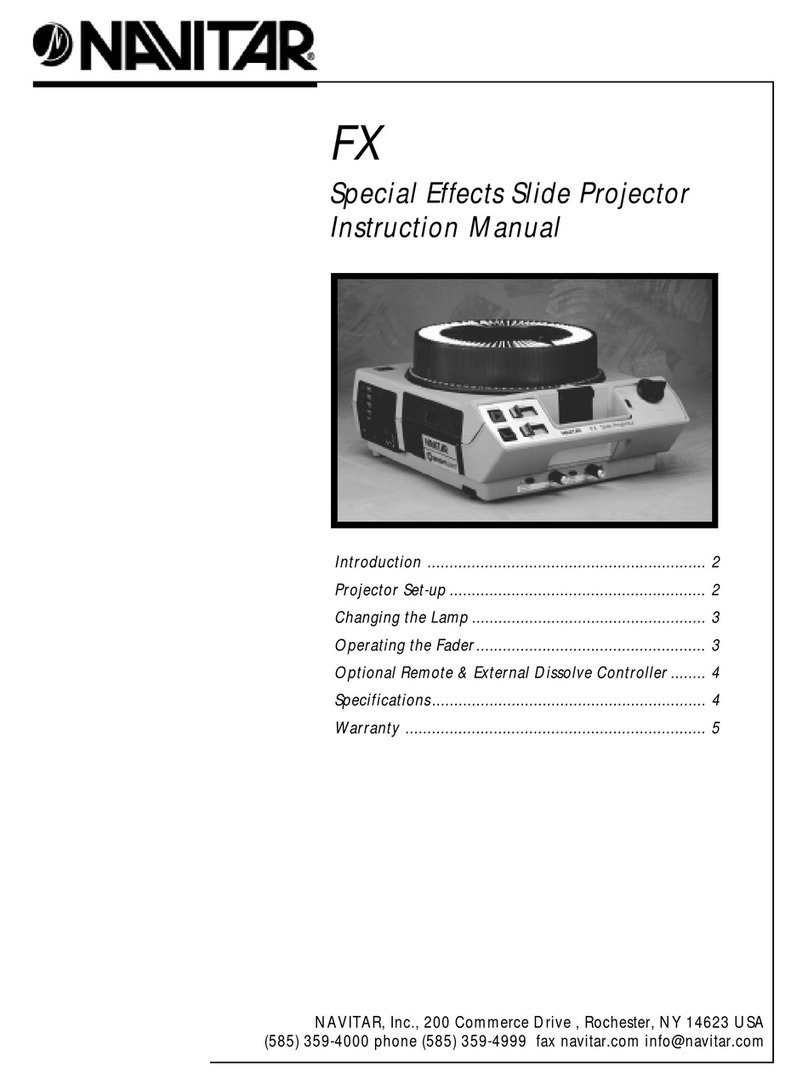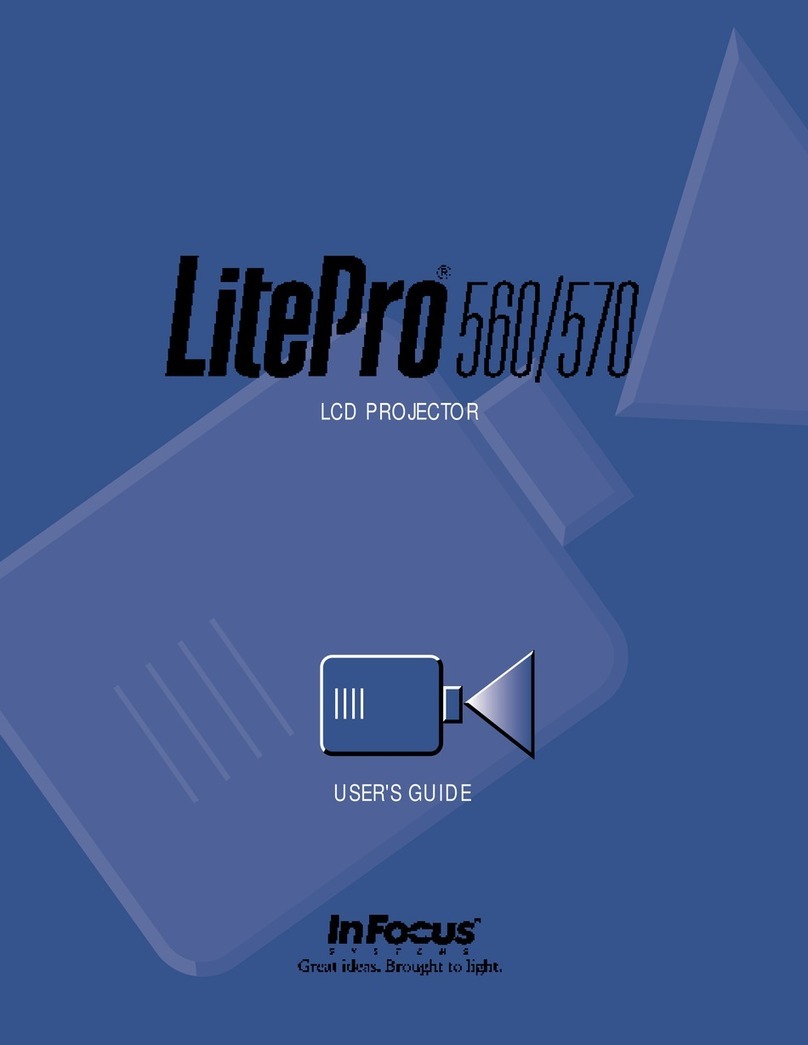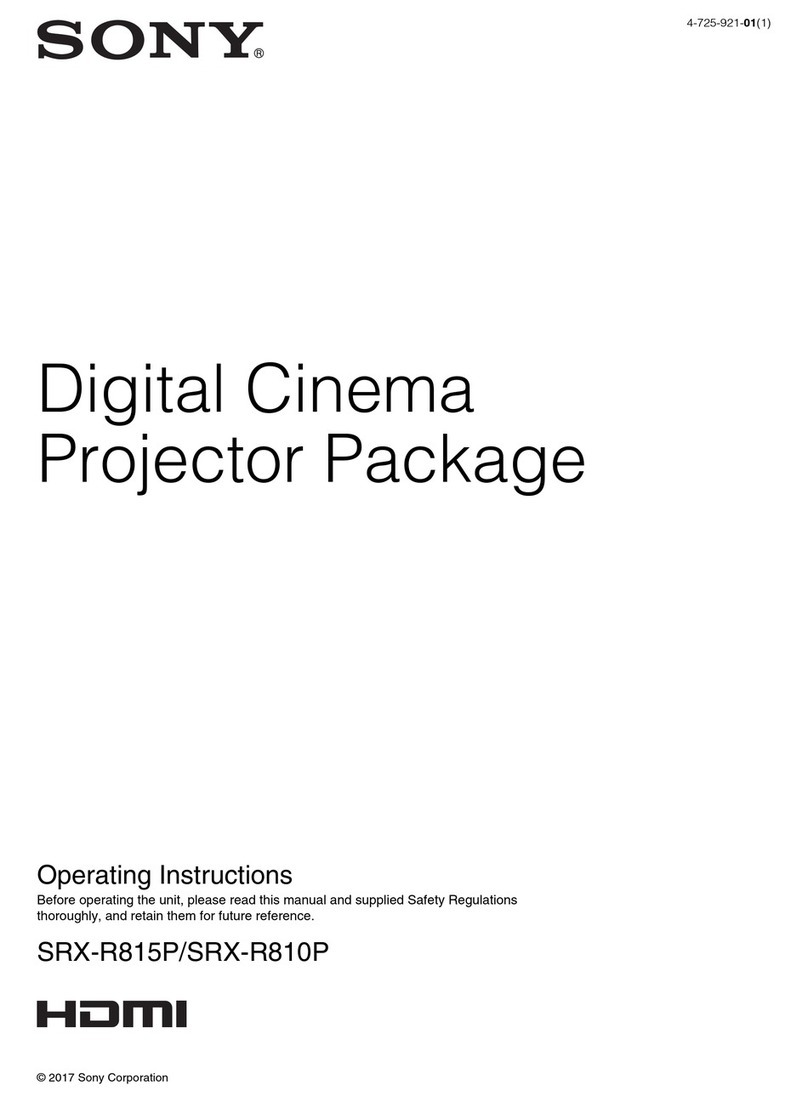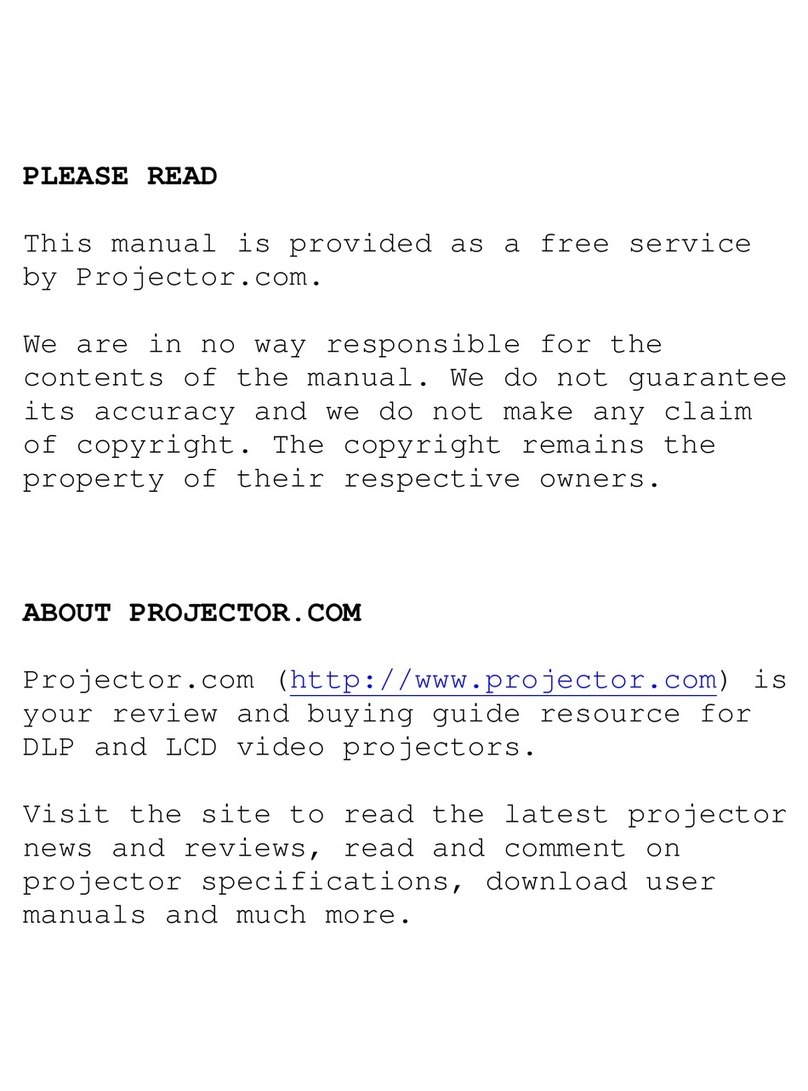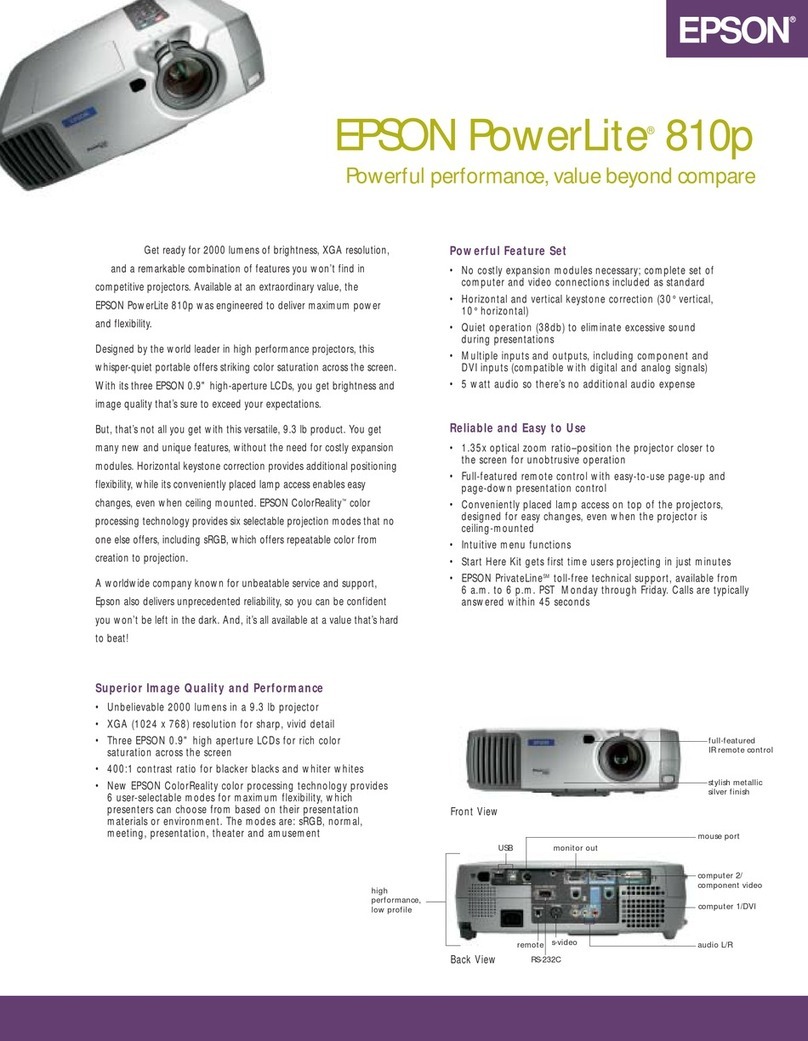3.1 Side Panel Removal ................................................................................ 2-5
3.2 Cabinet Top Removal .............................................................................. 2-5
3.3 Main Board Removal ............................................................................... 2-6
3.4 Rear Panel, AV Board and FN903 Removal ........................................... 2-6
3.5 Thermal SW Removal .............................................................................. 2-7
3.6 Optical Unit Removal ............................................................................... 2-7
3.7 Cabinet Front, R/C Board and Speaker Removal .................................... 2-8
3.8 Power Unit and FN906 Removal ............................................................. 2-8
3.9 Lamp Ballast Unit and Filter Board Removal ........................................... 2-9
3.10 FN904 Removal ..................................................................................... 2-9
3.11 FN902, FN905 and Sensor Board Removal .......................................... 2-10
3.12 FN901 and Lamp Cover SW Removal .................................................. 2-10
4. OPTICAL PARTS DISASSEMBLIES ............................................................... 2-11
4.1 Lamp Holder Removal ............................................................................. 2-11
4.2 Projection Lens Ass'y Removal ............................................................... 2-11
4.3 Polarized Glass-In Removal .................................................................... 2-12
4.4 Optical Unit Top Removal ........................................................................ 2-12
4.5 Locations and Directions ......................................................................... 2-13
5. LCD PANEL/PRISM ASS'Y REPLACEMENT ................................................. 2-14
5.1 LCD Panel/Prism Ass'y Removal ............................................................. 2-14
5.2 LCD Panel/Prism Ass'y Attachment ......................................................... 2-14
6. CLEANING ....................................................................................................... 2-15
7. LAMP REPLACEMENT ................................................................................... 2-16
Part 3: Adjustment
1. ELECTRICAL ADJUSTMENTS ....................................................................... 3-1
1.1 Adjustments after Parts Replacement ..................................................... 3-1
1.2 Service Adjustment Menu Operation ....................................................... 3-2
1.3 Service Adjustment Data Table ............................................................... 3-3
2. CIRCUIT ADJUSTMENTS ............................................................................... 3-7
2.1 PC Pedestal Adjustment .......................................................................... 3-8
2.2 PC Gain Adjustment ................................................................................ 3-8
2.3 Video Gain Adjustment ............................................................................ 3-9
2.4 480p Pedestal Adjustment ....................................................................... 3-9
2.5 480p Gain Adjustment ............................................................................. 3-10
2.6 480i Gain Adjustment .............................................................................. 3-10
2.7 Gamma Adjustment ................................................................................. 3-11
2.8 Common Center Adjustment ................................................................... 3-11
2.9 White Balance Adjustment ....................................................................... 3-12
2.10 Note On White Uniformity Adjustment ................................................... 3-12
3. OPTICAL ADJUSTMENTS .............................................................................. 3-13
3.1 Contrast Adjustment ................................................................................ 3-13
3.2 Condenser Lens Adjustment ................................................................... 3-14
3.3 Relay Lens-Out Adjustment ..................................................................... 3-15
4. TEST POINTS AND LOCATIONS ................................................................... 3-16
IV


